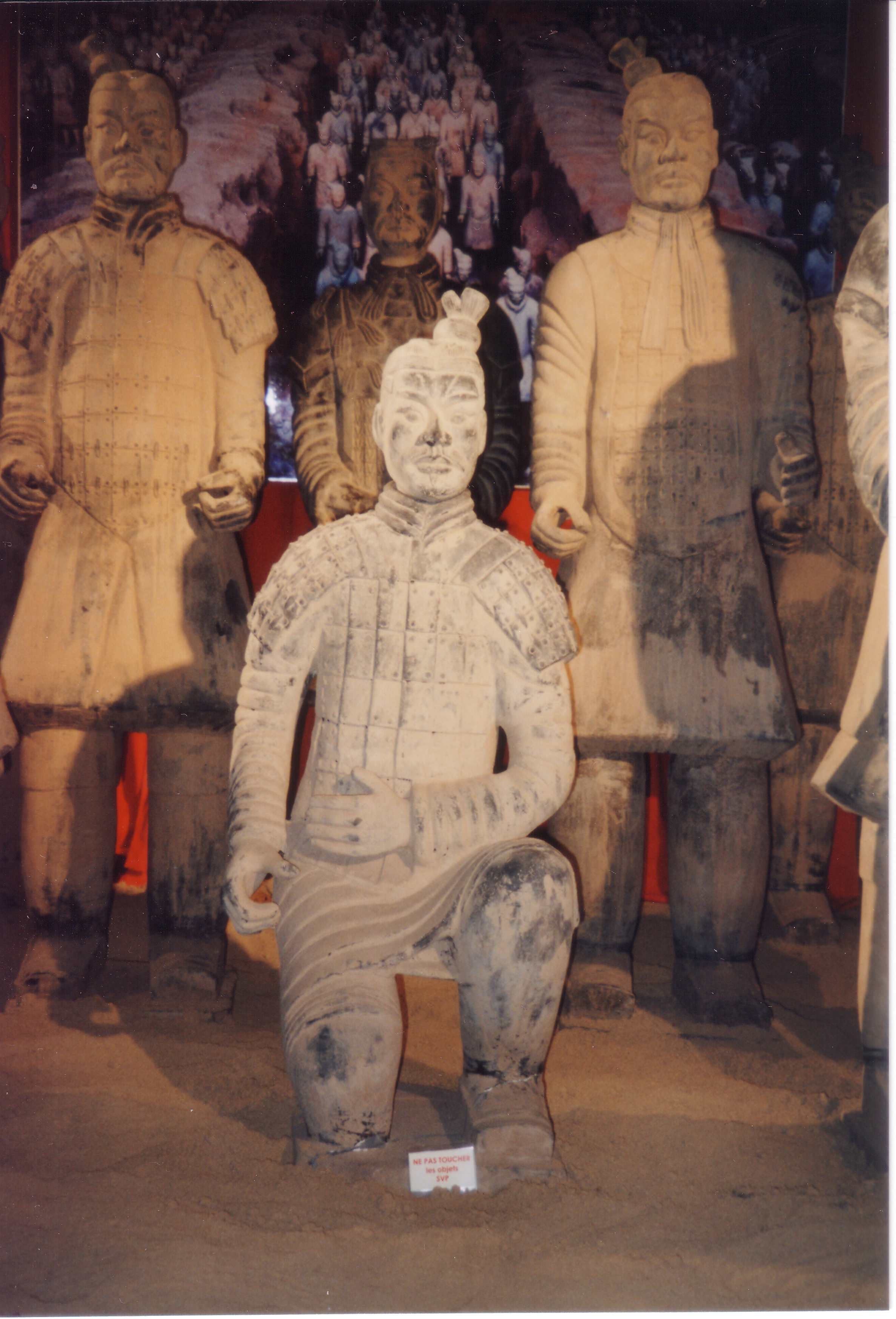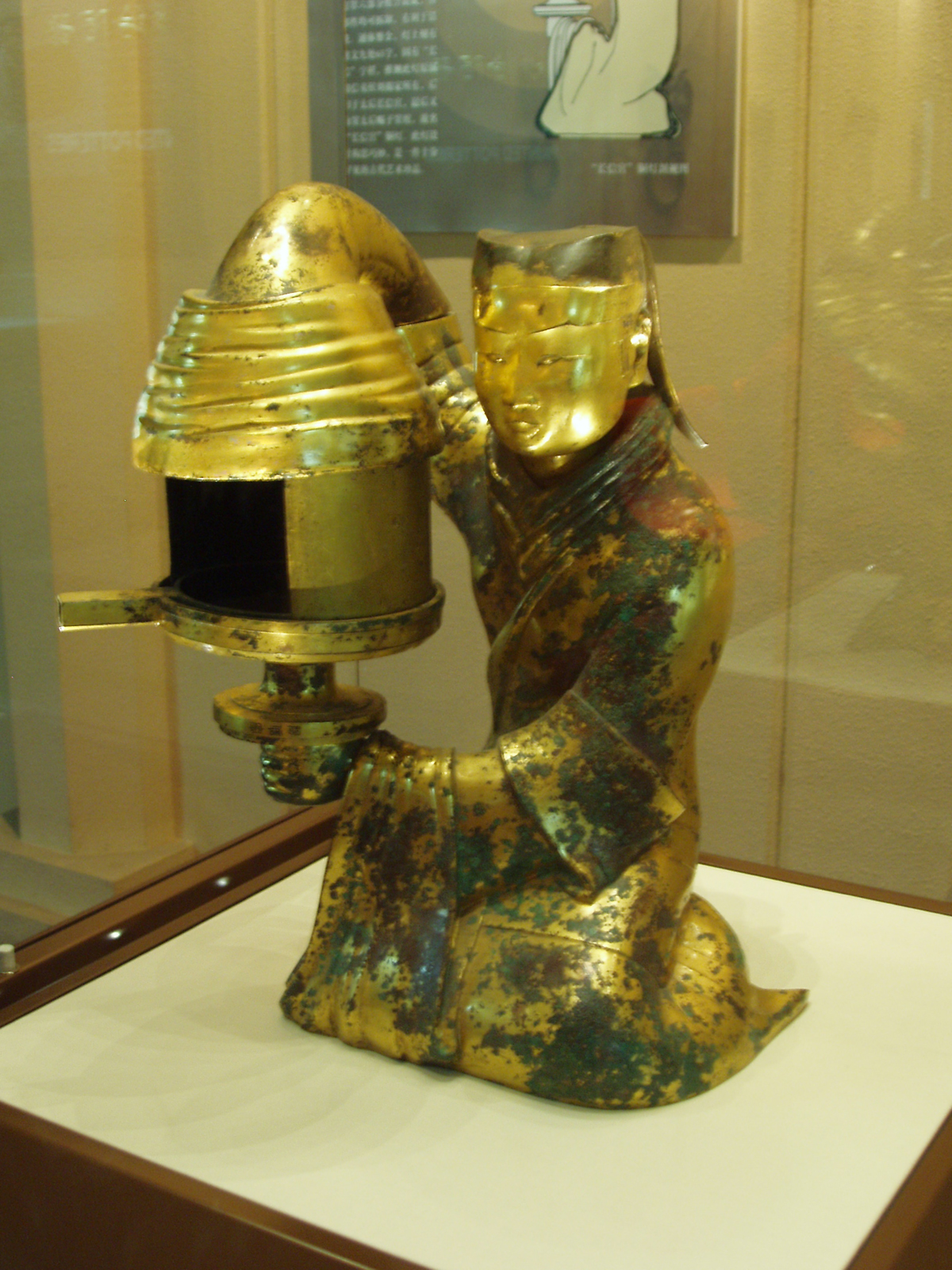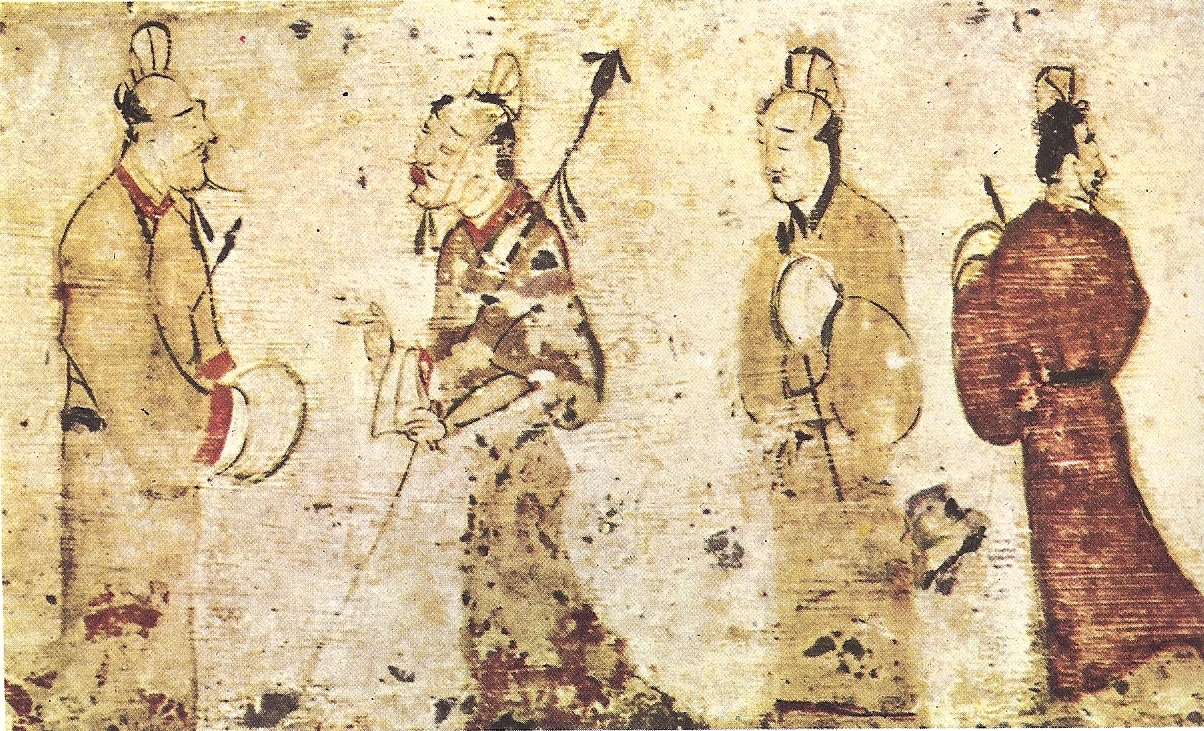|
Early Imperial China (221 BC–AD 220) Qin sculpture The Terracotta Army, inside the Mausoleum of the First Qin Emperor, consists of more than 7,000 life-size tomb terra-cotta figures of warriors and horses buried with the self-proclaimed first Emperor of Qin (Qin Shi Huang) in 210–209 BC. The figures were painted before being placed into the vault. The original colors were visible when the pieces were first unearthed. However, exposure to air caused the pigments to fade, so today the unearthed figures appear terracotta in color. The figures are in several poses including standing infantry and kneeling archers, as well as charioteers with horses. Each figure's head appears to be unique, showing a variety of facial features and expressions as well as hair styles. Pottery Porcelain is made from a hard paste made of the clay kaolin and a feldspar called petuntse, which cements the vessel and seals any pores. Chinahas become synonymous with high-quality porcelain. Most china pots comes from the city of Jingdezhen in China's Jiangxi province. Jingdezhen, under a variety of names, has been central to porcelain production in China since at least the early Han Dynasty.The most noticeable difference between porcelain and the other pottery clays is that it "wets" very quickly (that is, added water has a noticeably greater effect on the plasticity for porcelain than other clays), and that it tends to continue to "move" longer than other clays, requiring experience in handling to attain optimum results. During medieval times in Europe, porcelain was very expensive and in high demand for its beauty. TLV mirrors also date from the Han dynasty. Han art The Han Dynasty was known for jade burial suits. One of the earliest known depictions of a landscape in Chinese art comes from a pair of hollow-tile door panels from a Western Han Dynasty tomb near Zhengzhou, dated 60 BCE.[1] A scene of continuous depth recession is conveyed by the zigzag of lines representing roads and garden walls, giving the impression that one is looking down from the top of a hill.[1] This artistic landscape scene was made by the repeated impression of standard stamps on the clay while it was still soft and not yet fired.[1] However, the oldest known landscape art scene tradition in the classical sense of painting is a work by Zhan Ziqian of the Sui Dynasty (581–618). Crossbow men from theTerracotta Army, interred by 210 BC, Qin Dynasty 
Crossbow men from theTerracotta Army, interred by 210 BC, Qin Dynasty A gilt bronze lamp with a shutter, in the shape of a maidservant, from the Western Han Dynasty, 2nd ... 
A gilt bronze lamp with a shutter, in the shape of a maidservant, from the Western Han Dynasty, 2nd century BC
Two gentlemen engrossed in conversation while two others look on, a painting on a ceramic tile from ... 
Two gentlemen engrossed in conversation while two others look on, a painting on a ceramic tile from a tomb nearLuoyang, Henan province, dated to the Eastern Han Dynasty (25–220 AD) |